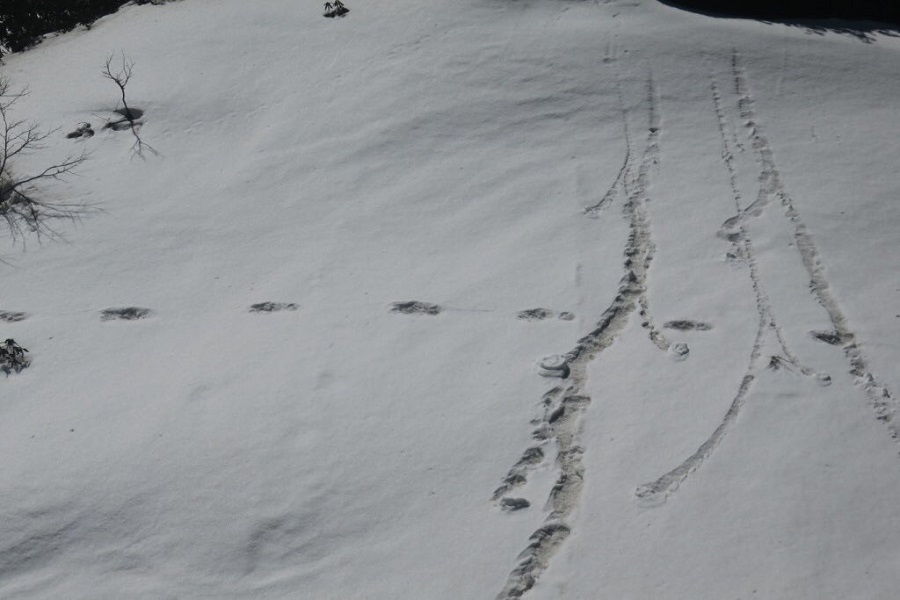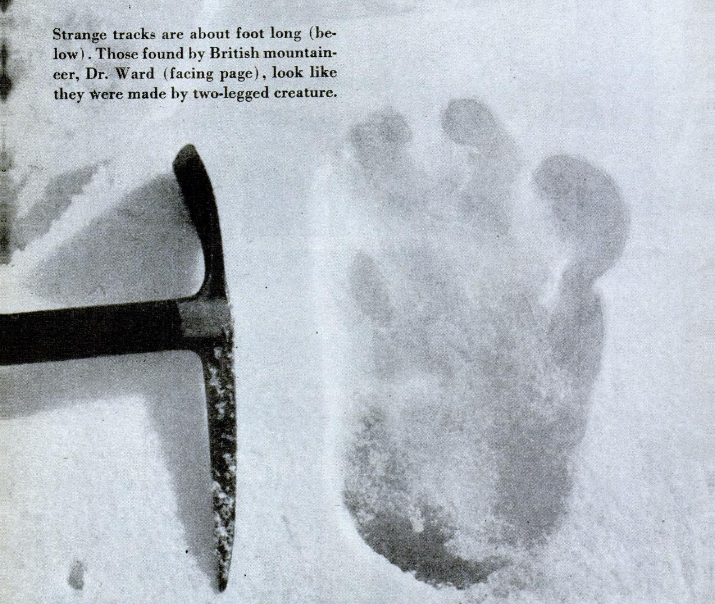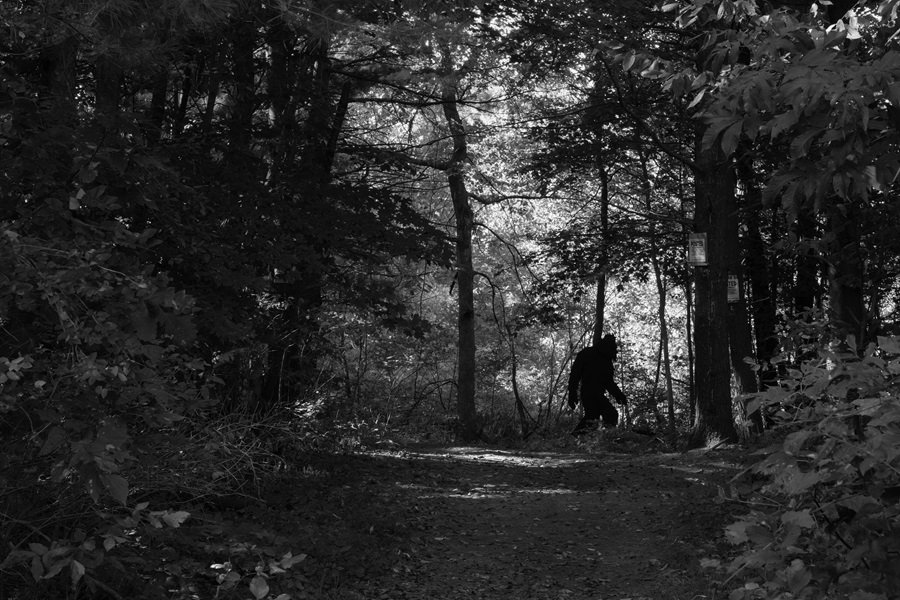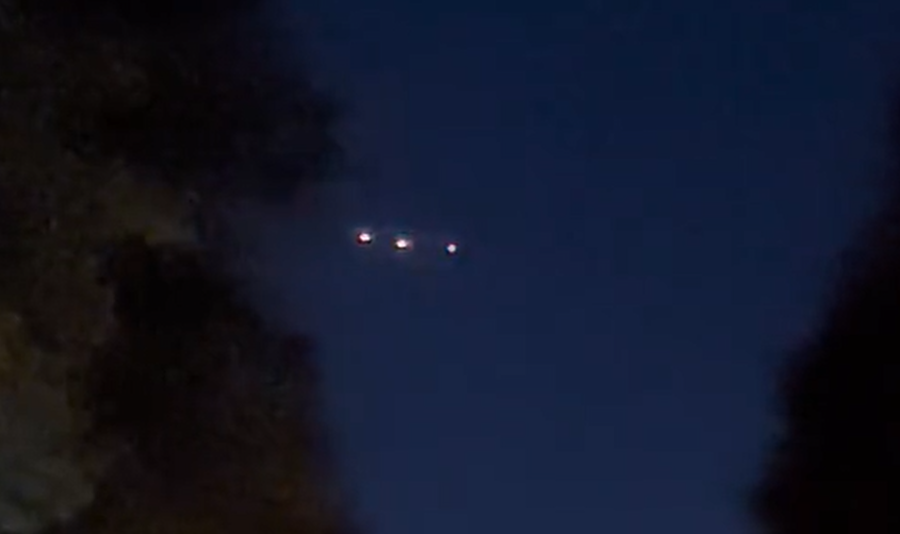Indian Army Tweets Photos of 'Yeti' Footprints Found in Himalayas
The footprints moving horizontally across this photo are said to be from a yeti. (ADG PI - Indian Army / Twitter)
The Indian Army tweeted yesterday that a "Mountaineering Expedition Team" found mysterious footprints belonging to the "mythical beast 'Yeti'" near Makalu Base Camp on April 9th.
Mount Makalu is the world’s fifth-highest mountain, located east of Everest in the Himalayas.
The footprints reportedly measured 32 inches long by 15 inches wide.
For the first time, an #IndianArmy Moutaineering Expedition Team has sited Mysterious Footprints of mythical beast 'Yeti' measuring 32x15 inches close to Makalu Base Camp on 09 April 2019. This elusive snowman has only been sighted at Makalu-Barun National Park in the past. pic.twitter.com/AMD4MYIgV7
— ADG PI - INDIAN ARMY (@adgpi) April 29, 2019
Yeti are said to haunt the Himalayan mountains of Tibet, and are described as large, hirsute humanoids covered in reddish-brown hair. The phrase Abominable Snowman is often used in the West to refer to Yeti, based on a mistranslation of the resident Sherpa's name for them, metoh-kangmir, which actually translates as "man-bear snowman." Yeti are similar in appearance to their North American cousin, Bigfoot, and reportedly display the same baffling behavior, seemingly capable of appearing and disappearing at will among the Himalaya's snowy peaks.
Closeups of the reported ‘Yeti tracks’. (ADG PI - Indian Army / Twitter)
Reactions to the social media post have been mixed, with both skeptics and believers sounding off about the photos.
Some have suggested that the imprints were caused by a person wearing snow shoes, but the distance between tracks appears to be too long for that suggestion and they are placed one in front of the other—an unusual gait for a biped.
Don't think so..the strides are too big..and there is depression in central area which is more..and if somebody will walk with snowboard then atleast some drag mark will be there..
— sumeet kumar mund (@sumeetkmund) April 29, 2019
But others believe the tracks are from a genuine Yeti.
+about tracking and following the creatures. Heavy to big creatures, on the bipedal mode walk very slow while observing the surroundings, while watching that no one is tracking them. This image is from Laeloti footprints of Australopithecus afrensis. See the single line! pic.twitter.com/o45nXjZBMV
— Rao Tejas (@TejasOmkara) April 30, 2019
While a few scientifically-minded skeptics have chided the Indian Army for being irresponsible in prematurely identifying the tracks as belonging to a Yeti.
With all due respect, institutions such as yours should be more responsible and careful before going ahead and declaring the sighting of any footprints as 'Yeti's'! There's been lots of research done on Bigfoot/Yeti (including sighting/footprints) with none proving its existence.
— Kushal Prajapati, PhD (@KushalPrajapati) April 30, 2019
Many skeptics point to a study published in 2017 by a team of scientists, titled Evolutionary History of Enigmatic Bears in the Tibetan Plateau–Himalaya Region and the Identity of the Yeti, that found "the biological basis of the yeti legend to be local, extant bears." The study reported on new analyses of 24 field-collected and museum specimens, including a monastic relic said to come from a Yeti paw, and concluded that they originated from 23 distinct bears.
That study has not dissuaded those sympathetic to the existence of Yeti, who themselves point to the tracks and eyewitness accounts accumulated over decades of interest in the cryptid.
A'Yeti track' found near Menlung Glacier, west of Everest, in 1951 by Michael Ward and photographed by Eric Shipton; the men were on an expedition to Everest with Sir Edmund Hillary. (Wikipedia)
The Indian Army has so far not released any further statement regarding the tracks.
If you enjoyed this article and would like to support the Singular Fortean Society, please consider becoming an official member by signing up through our Patreon page—membership includes a ton of extra content and behind-the-scenes access to the Society’s inner workings.





















